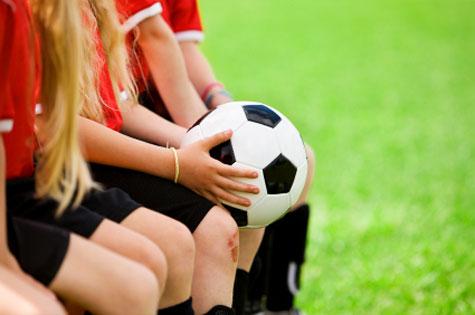With one quarter of school-aged children overweight or obese, policy makers and experts are looking at any and all possibilities to help halt, and hopefully to reverse, the trend.
A recent report by the Cancer Council NSW and the Prevention Collaboration from the University of Sydney suggested the establishment of a Sport Sponsorship Fund to manage the collection and distribution of sponsorship funding for community or grassroots sporting clubs. The report’s authors believe that the “level of detachment” between sponsors and clubs would help limit children’s exposure to marketing by food and drink companies, with data showing that around 60% of children thought sport sponsors were “cool”.
The report takes no account of whether food and drink companies would continue to fund grassroots sport if they were limited to the equivalent of ‘plain paper packaging’ of their sponsorship dollars, and of the impact on individual sports.
But more importantly, while marketing of food and drink to children is an important issue, are children who already play sport really the highest priority target in addressing childhood obesity?
The causes of childhood obesity are many and complex. The concern is because of the health and social impact on children today; as well as the long term impact on their health in years to come because of the increased risk of what is known as chronic diseases such as heart disease, stroke, cancer, diabetes, respiratory conditions and mental illness. The most important risk factors in chronic disease are well known and largely preventable. They are:
- poor diet and nutrition
- tobacco consumption
- risky use of alcohol
- socio-economic determinants, and
- lack of physical activity.
So how many children play sport in Australia?
The latest available data from the Australian Bureau of Statistics (ABS) shows that 1.7 million 5-14 year olds play some form of sport outside school hours. That’s 63% of all 5-14 year old children – which means that 1 million children (37%) do not play any form of organised sport.
Which children play sport?
The ABS data shows us that the kids who are least likely to play sport are those either from one parent families or where one or both parents are unemployed. In fact, the participation rate of children from a one parent family where the parent is unemployed is 37% - the reverse of the national picture. It is about the same for two parent families with both parents unemployed.
In other words, 63% of children from lower socio-economic backgrounds meet two of the key criteria for chronic disease risk even before they start making their own lifestyle decisions: their socio-economic profile and lack of physical activity – the latter because, for many, it is simply not affordable. But individual behaviour really can make a difference in preventive health measures. For example, becoming physically active can help reduce the influence of other risk factors.
And this is a compelling reason for getting more kids into sport.
Not only is it good for the individual child and their health, but there is increasing evidence to show that physical activity and other health promotion strategies also have a positive impact on educational and social outcomes. For every child that plays sport, there is reduction in the burden of chronic disease 30, 40 or 50 years into the future. And that’s good for Australia.
Some sports are already quite affordable. The very wealthy sports such as Australian Rules and rugby league provide significant subsidies to kids who play the junior versions of their games.
But they are not every child’s choice, and not all sport can afford to subsidise the playing costs as well as give practical support to parents with the ‘extras’ that come with children’s sport - such as the right shoes or boots, playing uniforms, tracksuits, referee fees and transport.
We read almost every day about some of Australia’s billionaires and their willingness to invest in our nation and ‘give something back’ – often in some form of sport. So here’s an idea for them.
Help the 37% of children who don’t play sport, to do so. Make sport more affordable and more accessible for them through a non-profit Foundation to give them the opportunity to play the sport they love and to help them develop a healthier lifestyle.
Not only would you be helping them, their mums and dads and their sport – you would also help have a long term positive impact on the burden of chronic disease in Australia.
Now that would really be giving back!








 Agree (2)
Agree (2) Disagree (
Disagree (









__small.png)










